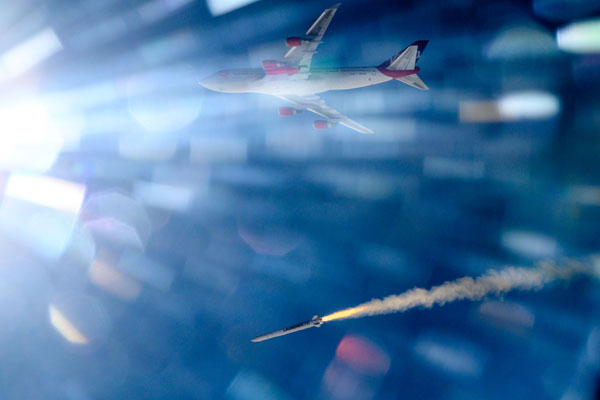
Virgin Orbit Plans First UK Launch for Late August (Image Credit: Payload)

by Douglas Messier
Managing Editor
LONG BEACH, Calif. — With three successful launches under its belt, Virgin Orbit is planning two flights this summer to demonstrate its agile air-launched booster system, including the first-ever satellite launch from the United Kingdom, a company executive said this week.
The first launch, scheduled for June 30, will orbit seven satellites off the coast of Southern California for the U.S. Space Force and NASA using the company’s LauncherOne rocket, which will be dropped over the Pacific Ocean by the Boeing 747 Cosmic Girl. The flight will originate from Mojave Air and Space Port.
Cosmic Girl will then move eight time zones away to the Cornwall Airport Newquay for the first launch from UK soil at the end of August.
“Any time, any place, any orbit really does work for us,” said Virgin Orbit Chief Strategy Office Jim Simpson during a keynote speech at the Space Tech Expo.
Payloads announced for the Cornwall flight are shown below.
| Satellite(s) | Organization | Purpose | Nation(s) |
|---|---|---|---|
| Amber-1 | Satellite Applications Catapult | Maritime domain awareness | UK |
| ForgeStar-01 | Space Forge | Technology demonstration | UK |
| Kernow Sat 1 | University of Exeter | Earth observation | UK |
| Prometheus 2A, 2B | UK Ministry of Defense/US National Reconnaissance Office | Technology demonstration | UK/US |
| Name TBA | ETCO | Earth observation | Oman |
The launch will include the first satellite launched by Oman. It is being bult by SatRevolution of Poland.
Simpson said the most recent launch in January, titled “Above the Clouds”, demonstrated the system’s flexibility. Virgin Orbit received one satellite only two weeks before the launch; engineers were able to integrate the spacecraft in only two hours.
On launch day there were clouds at 30,000 ft that would have scrubbed the launch of a ground-based booster. Cosmic Girl was able to fly above the clouds to 35,000 ft and drop LauncherOne, Simpson said.
Virgin Orbit’s booster was also able to launch the satellites into a 45 degree inclination orbit. That is not possible for ground-based rockets launching from Vandenberg Air Force Base in California because the trajectory would take the boosters over inhabited areas, Simpson said.
LauncherOne is capable of placing satellites weighing 300 kg (661 lb) into a 500 km (311 mile) high sun synchronous orbit. Virgin Orbit is working on enhancements designed to raise the booster’s payload capacity to 350 kg (772 lb).
Virgin Orbit is working with Exoterra on a third-stage transfer vehicle that would allow for launches to geosynchronous orbit and beyond. In 2019, the company signed an agreement with SatRevolution and nearly a dozen Polish universities to send a small satellite to orbit Mars.
In order to expand operations, Virgin Orbit recently purchased two used Boeing 747s. One will be modified to handle LauncherOne flights, while the other is a cargo version capable of carrying two booster and support equipment.
In addition to Mojave and Cornwall, Virgin Orbit plans to launch from Anderson Air Force Base in the U.S. territory of Guam, Alcantara Launch Center in Brazil, and Oita Airport in Japan. Virgin Orbit has signed a memorandum of understanding with ANA Holdings for 20 launches from Oita.
Simpson said Virgin Orbit is talking to many other nations interested in launching satellites. Of the 70 space agencies around the world, only 10 of them have the capability of launch their own satellites. Virgin Galactic would like to capture a large share of the booming market for small spacecraft being launched to low Earth Orbit (LEO) as the world shifts away from large and expensive geosynchronous communications satellites.








